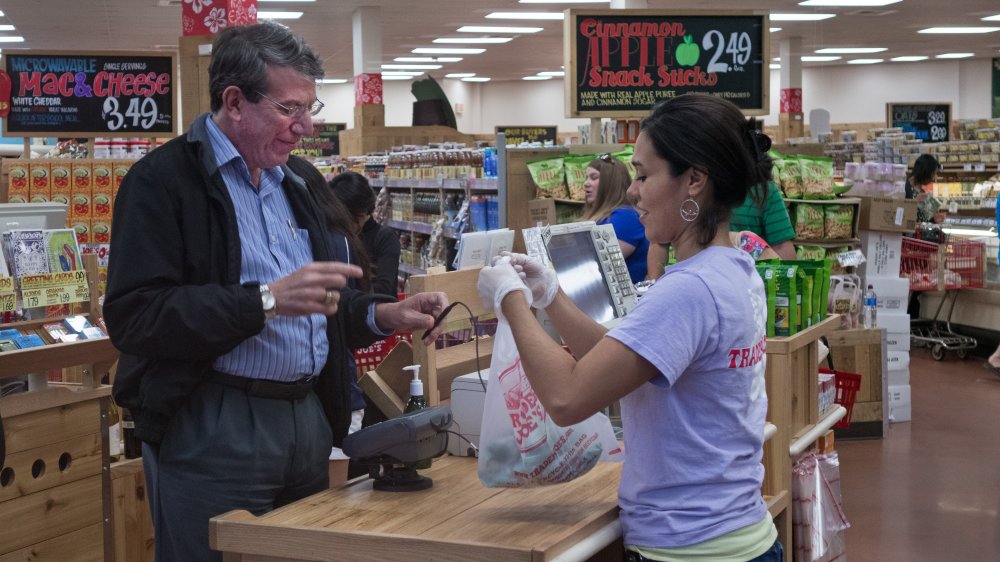A powerful example of good surprise comes from Southwest Airlines, which has thrived by offering passengers the combination of low fares and friendly service. Southwest’s flight attendants try to have fun with even the boring parts of the job, like making the flight safety announcements. Many of their cheeky safety announcements have gone viral over the years; in fact, there’s a “wall of fame” at Southwest headquarters that commemorates some of the best jokes:
- Ladies and gentlemen, if you wish to smoke, the smoking section on this airplane is on the wing and if you can light ’em, you can smoke ’em.
- To activate the flow of oxygen, pull down on the mask, place it over your nose and mouth, then insert one quarter for the first five minutes of oxygen and an additional dime every five minutes after. Exact change only, please!
- If you should get to use the life vest in a real-life situation, the vest is yours to keep.
- Put the oxygen mask on yourself first, then on your child. If you’re traveling with more than one child, start with the one who has more potential or who is less likely to put you in the home.
These wisecracks create peaks—they break the script of the usual monotonous announcements. But what are they worth? Do they have any economic value? In a workshop with the Southwest analytics team—the people who analyze customer data looking for helpful insights—we asked them, “How many extra flights does a customer take when they hear a funny flight safety announcement?”
There was silence in the room. They had never asked that question before. But they also knew that they could answer it—they had the right data. Southwest, like many companies, has obsessive amounts of customer data. Unlike most companies, though, they had the data in a form that could be used to make critical decisions. The analytics team had previously figured out, for instance, that passengers are forgiving of short flight delays, but past 25 or 30 minutes, they become less likely to take future flights with Southwest. As a result, Southwest’s executives evaluated purchasing two additional Boeing 737s as reserve aircraft, providing a backup option when other planes had to be taken out of service. The investment would not eliminate delays but it would mitigate them. Total cost? Roughly $50–70 million per plane, for a total of around $120 million.
Intrigued by the safety announcement question, Southwest’s insights team, including Frank Tooley, Katie Boynton, and Michael Overly, dug into the customer data. In the company’s surveys, about 1 in every 70 customers will mention, unprompted, that they heard a funny flight safety announcement. The insights team used those surveys to identify all the passengers on that same flight, since they all would have heard the same announcement.
The team was particularly interested to analyze the habits of customers who travel more than once per year on Southwest; let’s call them “loyal customers.” (Other passengers fly so infrequently, it’s hard to detect changes in their behavior.) Here’s what the analysis showed: When loyal customers were on a flight with a funny flight safety announcement, they flew one half-flight more over the next year than did similar customers who hadn’t heard one. (These are averages, of course, since it’s difficult to fly a half-flight without a parachute.)
The Surprising Payoff
What’s the value of those extra half-flights? The analytics group calculated that if Southwest could double the number of customers hearing a funny flight safety announcement, the result would be more than $140 million in revenue! That’s more than the cost of two 737s. But the revenue figure is an annual number—in other words, every single year that you could maintain the comedic performance, you’d earn extra revenue equal to the price tags of two jets. Just because your crew told some more jokes. That’s an astonishing return on investment, given that there is no real financial investment at all. (You don’t even need to train the attendants, really—just circulate recordings or transcripts of the funny bits.) Southwest proves, there’s great value in good surprise.
Contributed to Branding Strategy Insider by: Chip Heath and Dan Heath. Excerpted from their new book The Power of Moments: Why Certain Experiences Have Extraordinary Impact, with permission from Simon And Schuster Publishing.
The Blake Project Can Help: The Customer Experience Workshop
Branding Strategy Insider is a service of The Blake Project: A strategic brand consultancy specializing in Brand Research, Brand Strategy, Brand Growth and Brand Education





One comment
Kris
February 28, 2018 at 10:20 am
While levity when it comes to the challenge of flying is always appreciated, I can’t help but feel that this may not be the “added value” that would be most valuable to SouthWest. Perhaps it’s just me, but the oxygen mask and choosing the child with the most potential fell flat with me.
If SW is collecting data… I’d love to see it used towards “perks” their travelers love most or could use the most, as SW is not known as being a “perks” based airline. Feels hard to believe that an announcement would have truly driven 1/2 a plane ride. What little extras could SW be known for based on this data (hidden gems from their customers). Companies so often focus on what message they want to put out using data, but what do their customers want to hear/know?
Comments are closed.